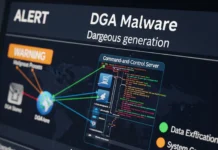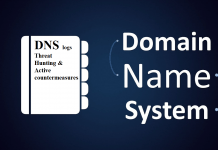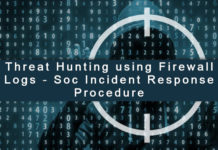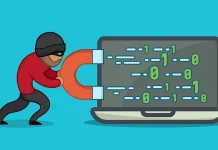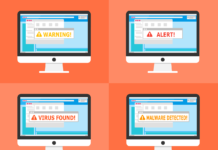Unmasking the Dark Side of Financial Urgency
In the fast-paced digital world, financial emergencies can strike without warning. Whether it’s an unexpected medical bill, a sudden job loss, or a critical business expense, the need for immediate funds often drives individuals to seek rapid solutions. Unfortunately, this desperation is a goldmine for cybercriminals who prey on vulnerable targets. In the realm of cyber security investigations, we’ve seen how malicious actors exploit the urgency of financial needs to orchestrate scams that are executed with alarming speed and precision. This article uncovers the hidden truths behind these schemes and offers a time-efficient approach to safeguarding yourself from falling victim.
Cybercriminals thrive in environments of panic and haste. They design traps that appear as legitimate opportunities for quick financial relief, only to ensnare unsuspecting individuals into fraud, identity theft, or worse. As investigators in the digital space, our goal is to expose these tactics and arm you with practical defenses that don’t require hours of research or complex tools. Let’s dive into how these threats operate and what you can do to stay one step ahead.
The Speed of Deception: How Scammers Target Financial Needs
One of the most insidious tactics used by cybercriminals is the creation of fake financial services that promise instant solutions. These scams often come in the form of phishing emails, fraudulent websites, or unsolicited messages claiming to offer immediate loans or emergency funds. What makes these traps so dangerous is their ability to mimic legitimate services, complete with professional-looking branding and urgent calls to action. Many people, in their rush to resolve a financial crisis, overlook red flags and share sensitive information like bank details or personal identification.
Generally speaking, scammers rely on psychological manipulation to push their targets into acting quickly. They create a sense of scarcity or impending doom—“Act now or miss out!”—to bypass rational decision-making. For those unfamiliar with cyber threats, these tactics can be incredibly convincing, especially when the need for money feels overwhelming. Recognizing the speed at which these scams unfold is the first step to avoiding them.
Red Flags That Scream “Scam” in Financial Offers
When time is of the essence, it’s easy to miss warning signs. However, there are common indicators that a financial offer might be a cybercriminal’s trap. First, be wary of any unsolicited communication. If you didn’t seek out the service, why are they reaching out to you? Legitimate financial institutions rarely send cold messages or emails asking for personal information upfront.
Another telltale sign is the demand for upfront fees or sensitive data before any agreement is made. Many people find themselves handing over money or details in the hope of securing funds, only to realize they’ve been duped. Additionally, poor grammar, misspelled words, or unprofessional website designs are often giveaways of fraudulent operations. Taking just a moment to scrutinize these elements can save you from significant loss.
Protecting Yourself: A Time-Efficient Defense Strategy
In the world of cyber security investigations, we emphasize actionable steps that don’t require extensive technical know-how. Protecting yourself from financial scams tied to urgent needs can be done swiftly if you follow a few core principles. Start by verifying the legitimacy of any service before engaging with it. A quick search of the company name alongside terms like “scam” or “review” can reveal whether others have reported suspicious activity.
Next, never share personal or financial information through unsecured channels like email or unverified websites. If a service seems legitimate but you’re unsure, contact them directly through official channels rather than replying to messages or clicking on provided links. When considering quick loan options, it’s important to prioritize trusted and regulated providers to ensure your safety and avoid potential fraud.
Finally, enable two-factor authentication (2FA) on your financial accounts. This adds an extra layer of security that can thwart cybercriminals even if they manage to obtain your credentials. These steps, while simple, are powerful tools in your defense arsenal and take mere minutes to implement.
The Role of Awareness in Outpacing Cyber Threats
Cybercriminals are constantly evolving their methods, but one thing remains constant: their reliance on exploiting human emotion. Financial desperation is a prime target because it clouds judgment and accelerates decision-making. As part of a broader cyber security mindset, staying informed about common scams and tactics is a proactive way to outpace these threats. Awareness doesn’t mean you need to become an expert overnight; it simply means cultivating a habit of skepticism when something seems too good to be true.
Many individuals have found that joining online communities or following cyber security blogs helps them stay updated on emerging threats. These resources often share real-world examples of scams, which can serve as cautionary tales. By dedicating just a few minutes each week to reading or discussing these topics, you build a mental checklist of what to watch out for during moments of financial urgency.
Responding to a Scam: Quick Steps to Minimize Damage
If you suspect you’ve fallen victim to a financial scam, acting fast is critical. First, cease all communication with the suspected scammer and secure your accounts by changing passwords and enabling additional security measures like 2FA. Contact your bank or financial institution immediately to report any unauthorized transactions or suspicious activity. The sooner you act, the better your chances of limiting the damage.
It’s also wise to report the incident to relevant authorities or cybercrime units in your region. While recovering lost funds can be challenging, documenting the incident helps build a case and may prevent others from falling into the same trap. Remember to keep records of all communications or transactions related to the scam, as these can be invaluable during investigations.
Building a Resilient Mindset Against Financial Cybercrime
The hidden truth about cybercriminals targeting financial desperation is that their success often hinges on speed—both theirs and yours. By adopting a time-efficient approach to cyber security, you can turn the tables on these malicious actors. It’s not about overhauling your entire digital life; it’s about making small, deliberate choices that add up to significant protection.
As we’ve explored, the key lies in awareness, quick verification, and decisive action. Financial emergencies are stressful enough without the added threat of scams, but with the right mindset, you can navigate these challenges without becoming a victim. The digital landscape may be fraught with dangers, but it’s also a space where informed individuals can stay ahead of the curve. Arm yourself with knowledge, trust your instincts, and never hesitate to take a moment to double-check before diving into a financial solution. In the end, those few seconds of caution could save you from a world of trouble.





